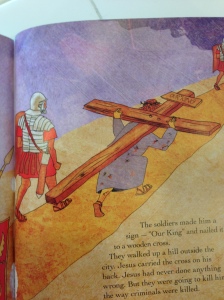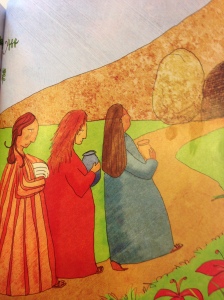
I’m always on the lookout for creative takes on old favorites. So, when my friend over at Silicon Valley Toddler posted this idea for coloring Easter eggs with rice, I was intrigued! We decided to try it out and–WOW!–what a fun activity with absolutely gorgeous results. This method is a relatively mess-free way for toddlers and preschoolers to get in on the Easter egg-dying action (no spilled cups of egg dye #ftw). Read on for the how-to.
What you need:
– Hard boiled eggs (Easy-peasy directions: arrange eggs in the bottom of a large pot so they have a little room to dance around–old eggs that have been sitting in your fridge for a week or two are best. Finding old things in my fridge is never a problem, so this works quite well for me. Cover the eggs with about an inch of cold water and spalsh some vinegar in the pot for a bit of Voodoo magic (actually, it will just help keep the yolks sunshiney-yellow instead of that nasty gray center you get sometimes). Put the pot on the stove and bring just to a boil. Turn off the stove, cover the pot, and keep the pot on the warm burner for 12 minutes. Remove the eggs with a slotted spoon into a bowl of ice water to stop the cooking. Transfer the cooled eggs back to their egg carton and store in the fridge until you’re ready to use them. Done and done.)
– Dry rice–a few cups of cheap rice will do
– Liquid food coloring (we went through one whole box of food coloring when we dyed 1-dozen eggs)
– Plastic containers with lids (My mama taught me to never throw away a used margarine or lunch meat container. If your mama taught you the same, use a few of these instead of your fancy Tupperware.)
What you do:
Place a handful of rice in each container (make sure the container is deep enough for the egg to move around with the lid on). Add a hard boiled egg to the container and several drops of food coloring.
Put the lid on your container and shake it to your little heart’s content!

If you want a mulit-colored marble-ized effect, go for it. This is your egg, no judging here. Just move the egg to a second rice container with another color of food coloring.
Once you’re satisfied with your creation, remove the egg, brush off the rice, and leave ’em to dry completely.

What gorgeous little speckled creations!

A few notes:
*This project is best done outside. Or inside, over a drop cloth with an extra dose of patience.
*If the color starts to wear out, just add a few more drops of food coloring to the rice.
* Your fingers will get a little (and by a little, I mean a LOT) messy when you touch the wet eggs. If you don’t like rainbow hands, just wear disposable gloves. Keep wet wipes or a hose nearby for your kids, because we all know they’ll be little balls of tie-dye magic by the end of this project despite your best efforts for cleanliness.
* Have some extra plastic Easter eggs lying around your house? Make your own noise makers (as if your children don’t already fit the bill): Fill a few plastic eggs with a bit of the dry rice and tape or hot-glue the egg shut. Shake, shake, shake–you have your own little maracas!
* Save the rice! After you’re done dyeing eggs, spread out the colored rice on cookie sheets to air dry. Store the dyed and dried rice in an airtight container (that’s fancy language for a Ziploc baggie) for future art projects. We’re going to make these cactus next week in preparation for our upcoming vacation to the desert.


























































